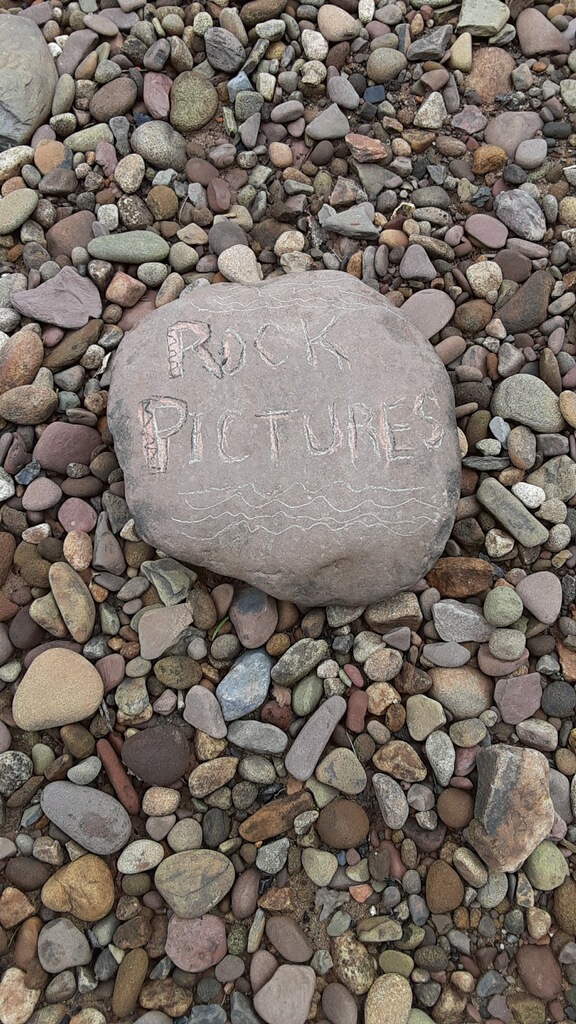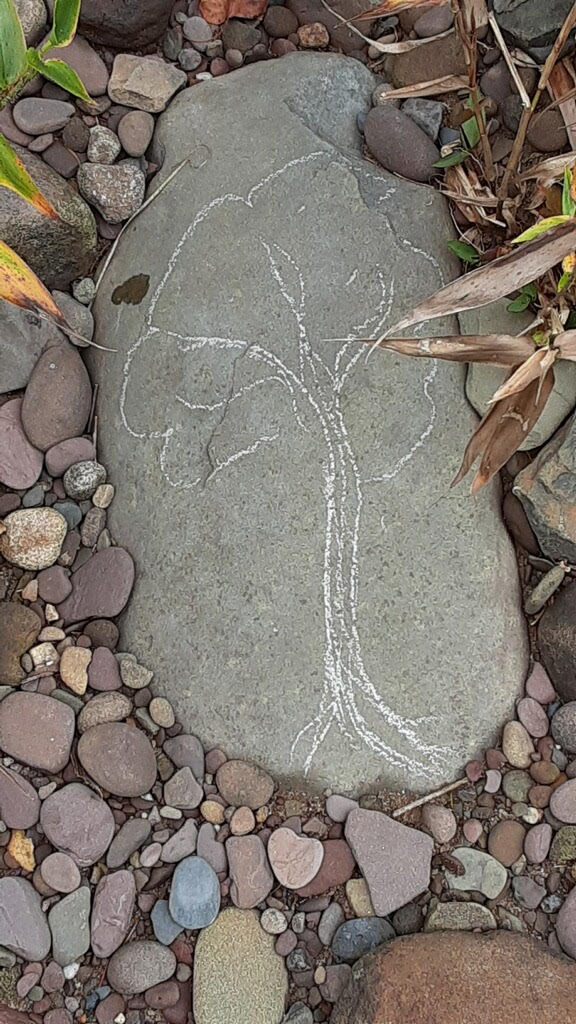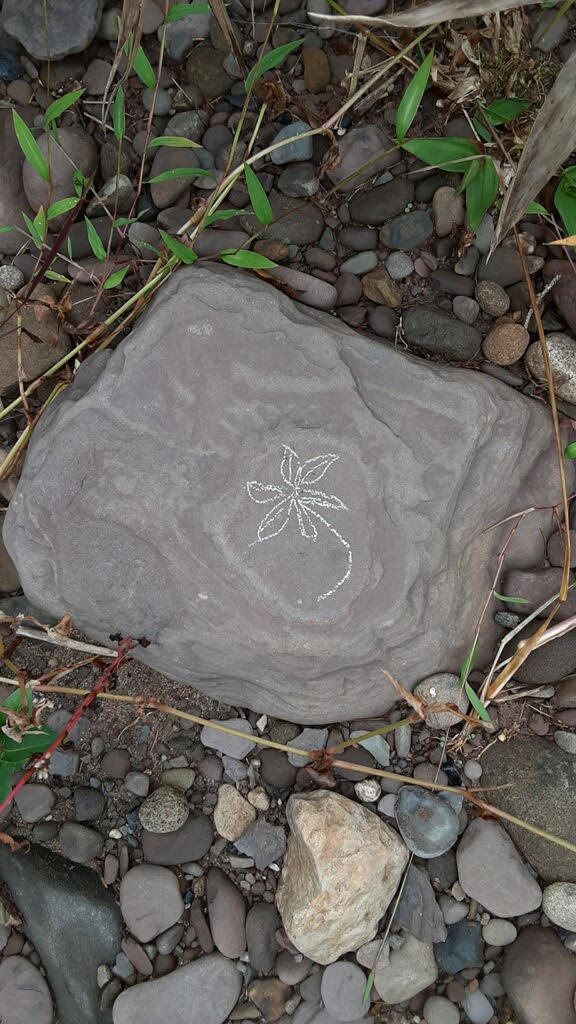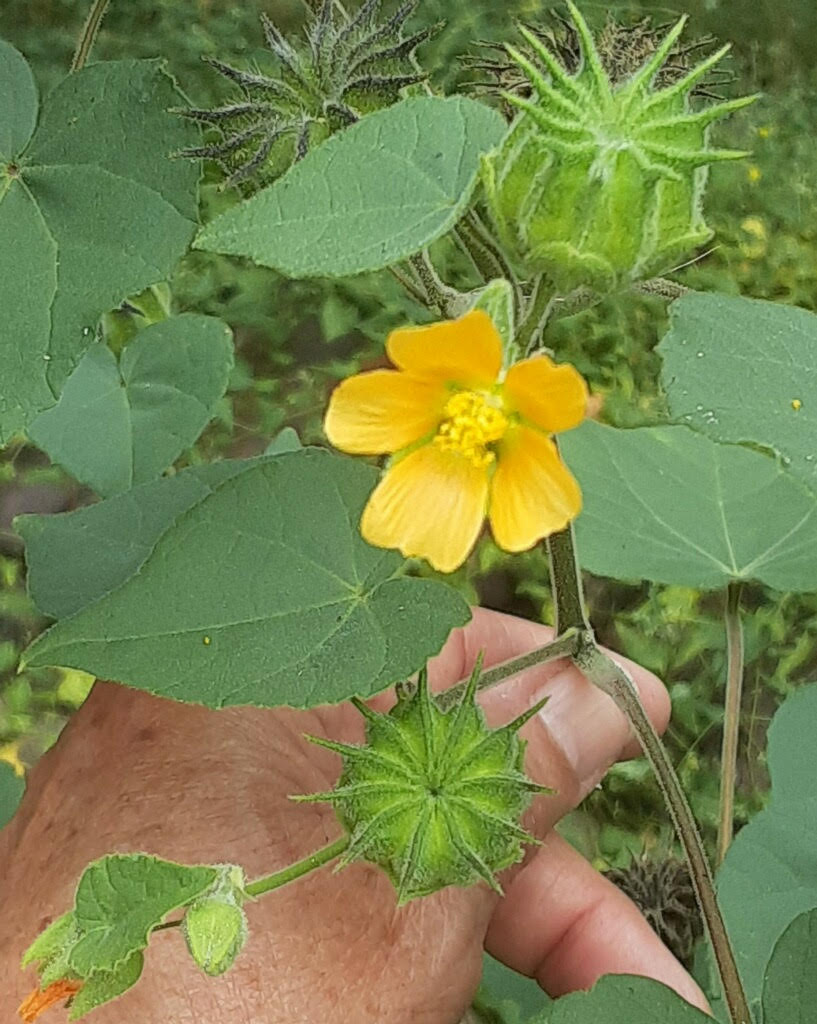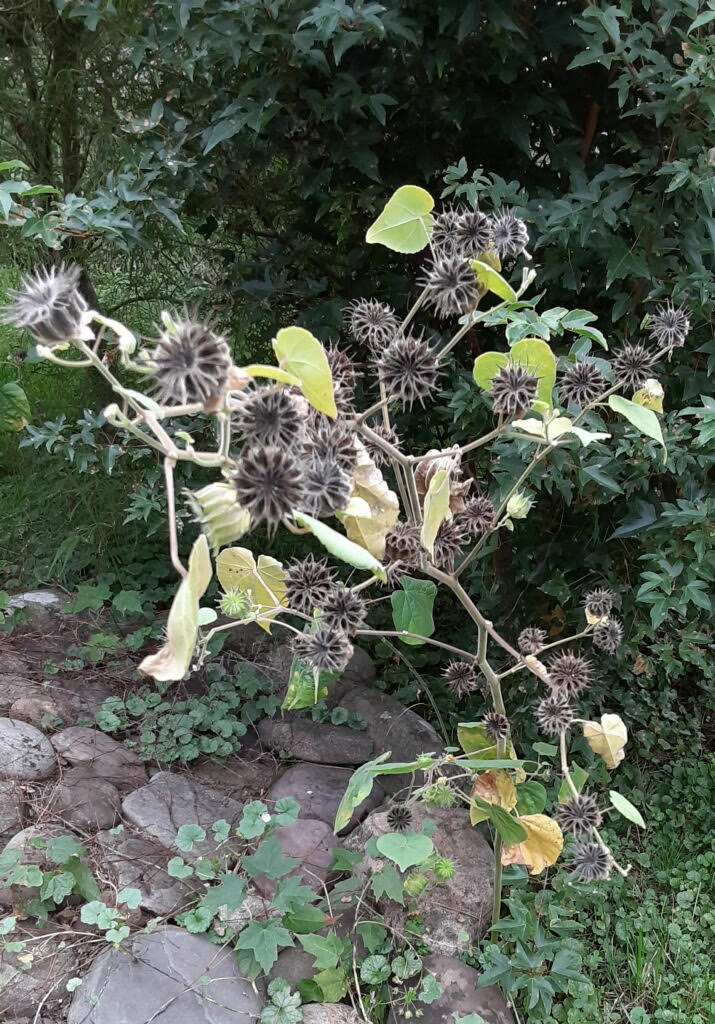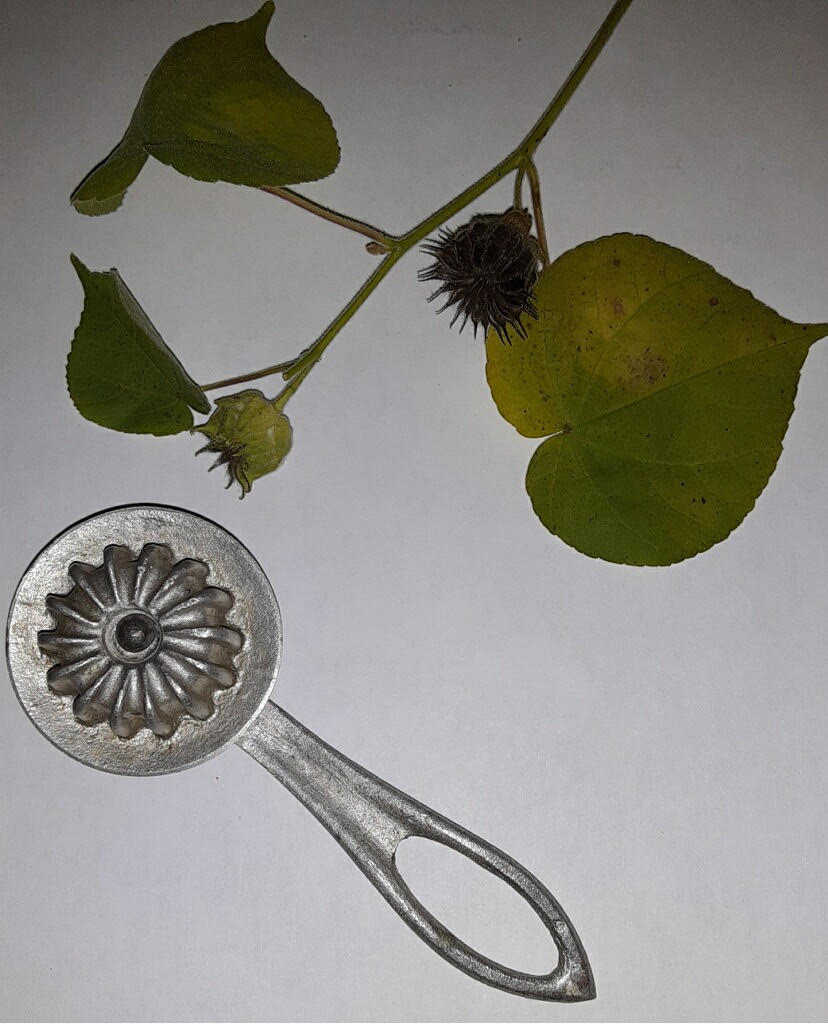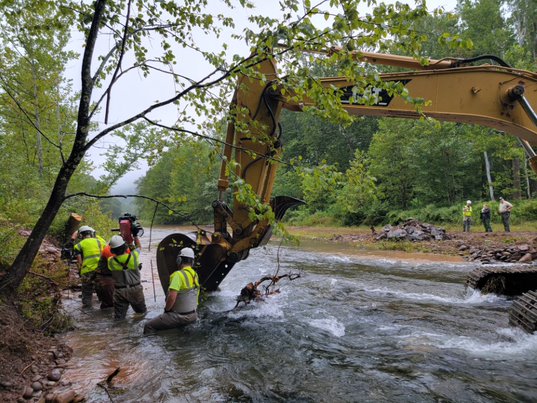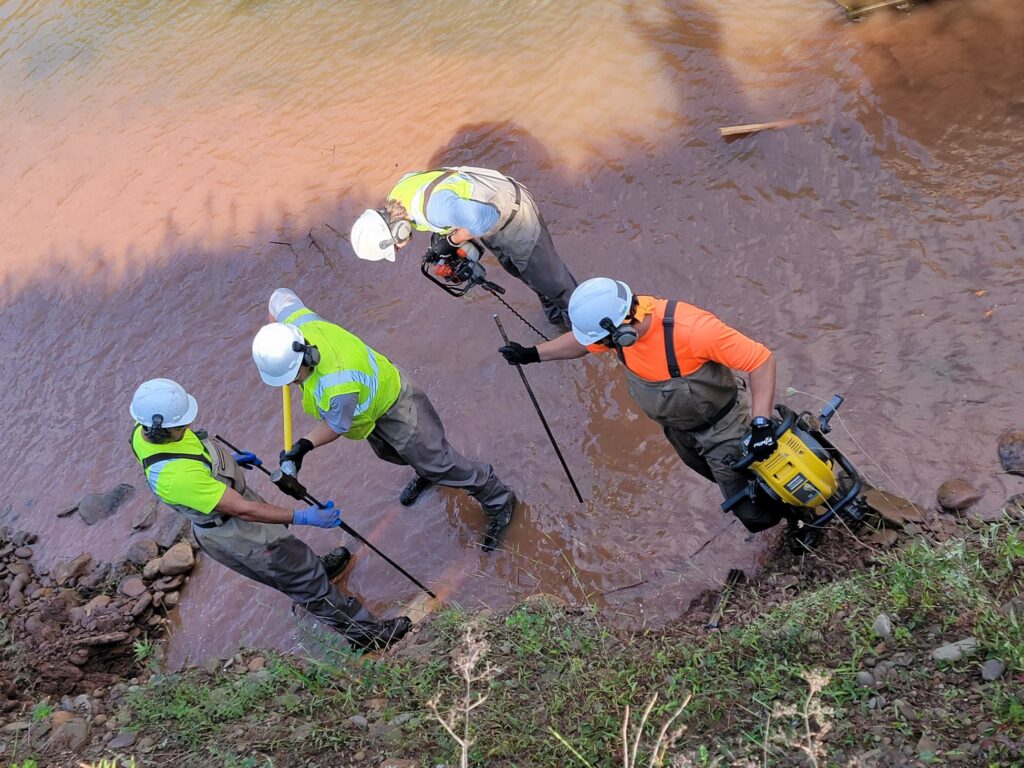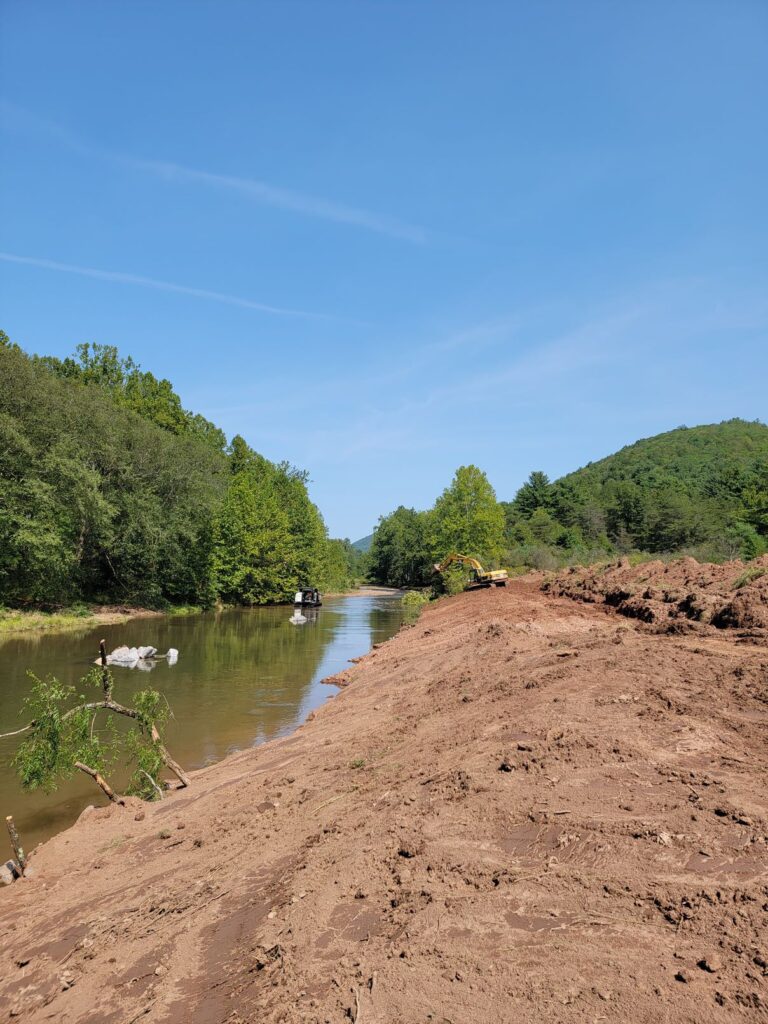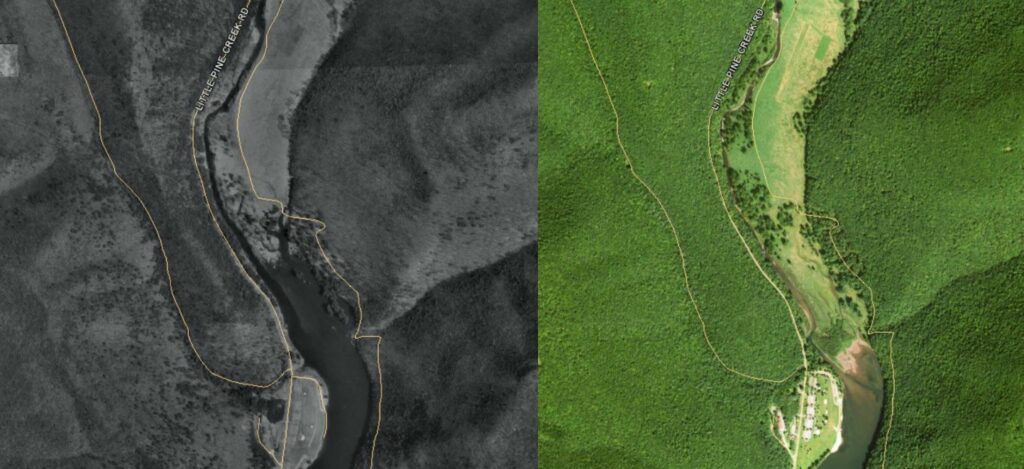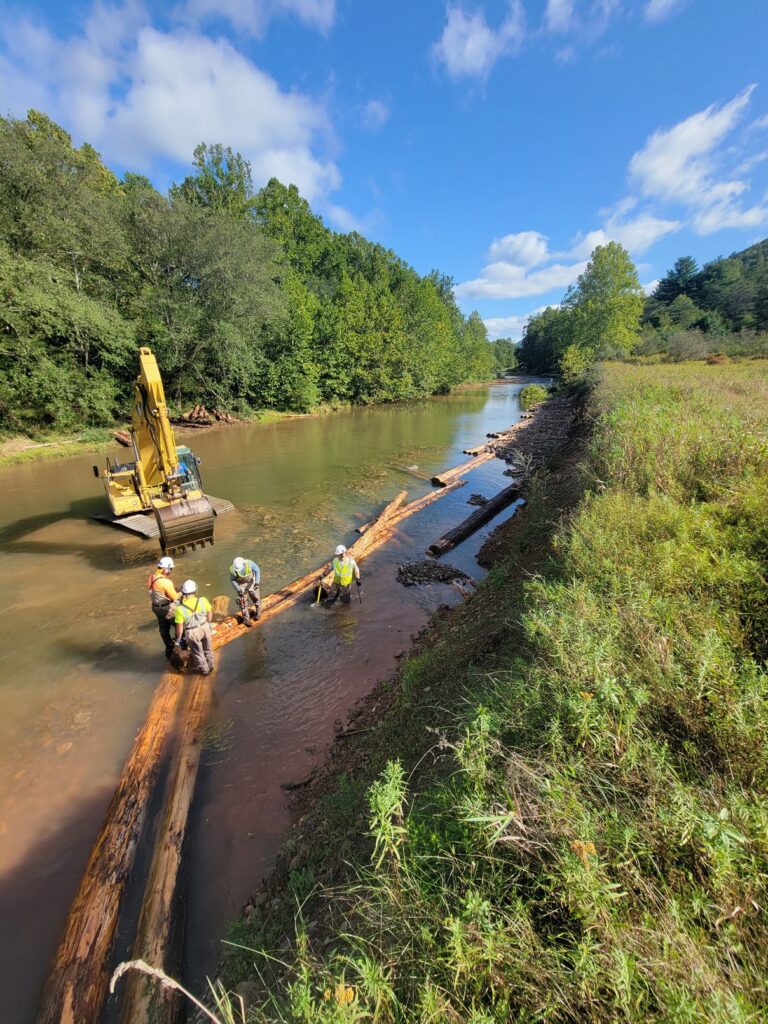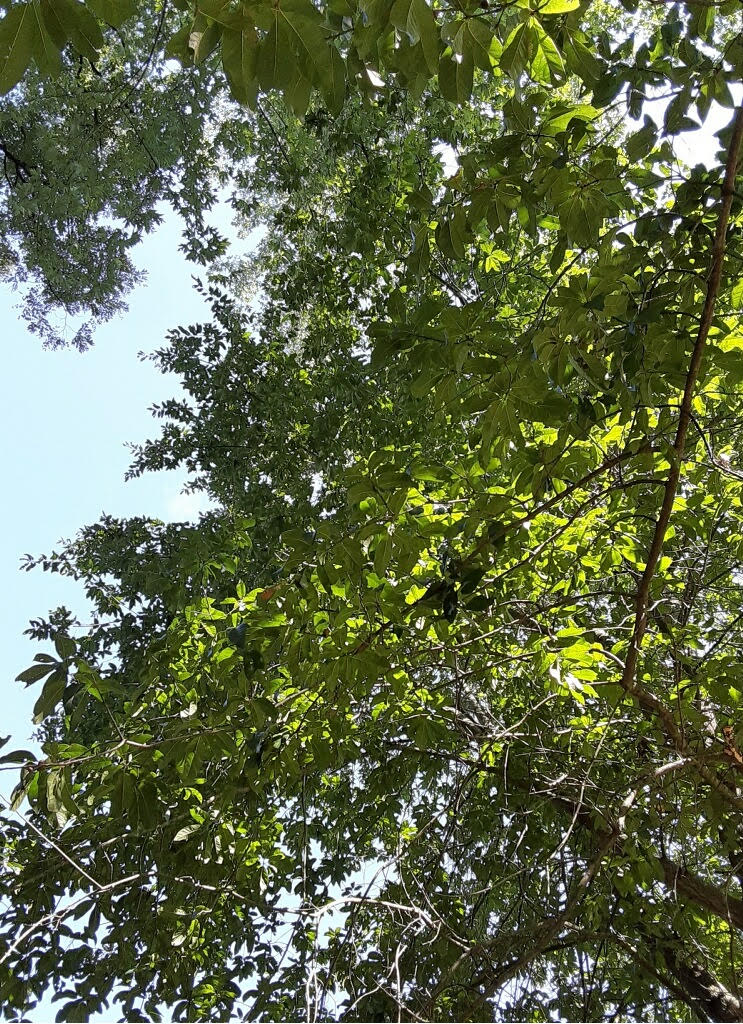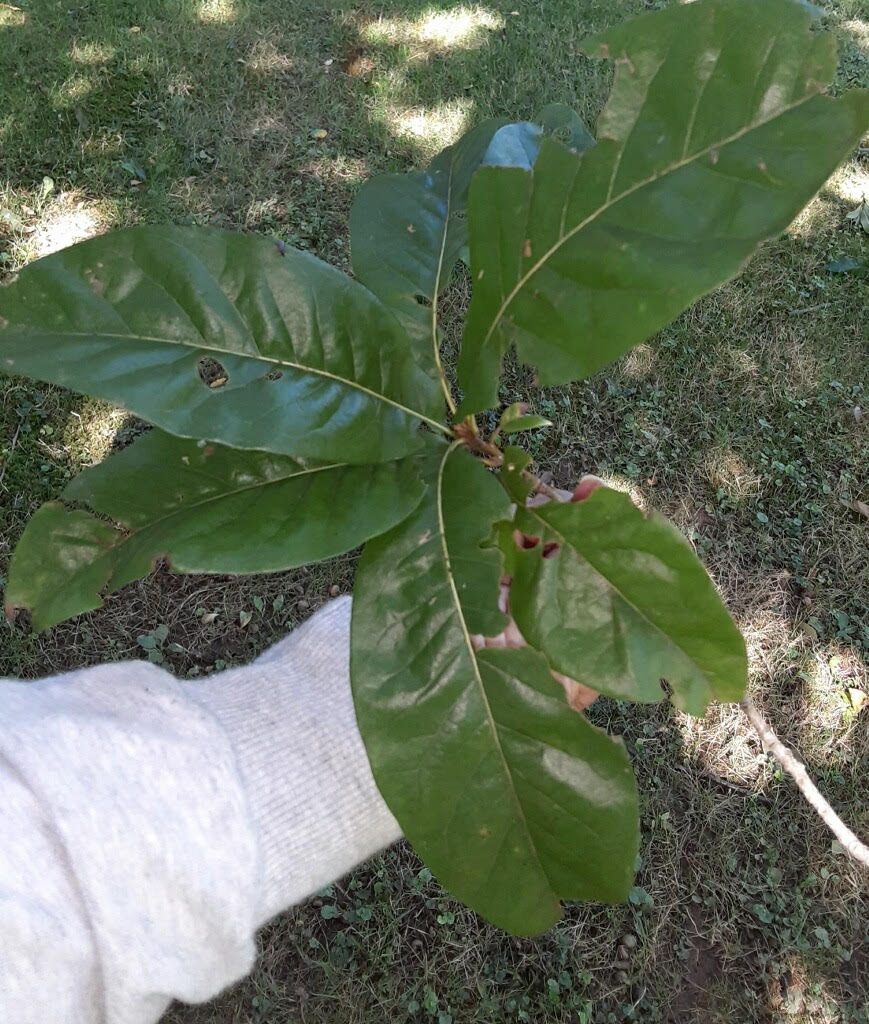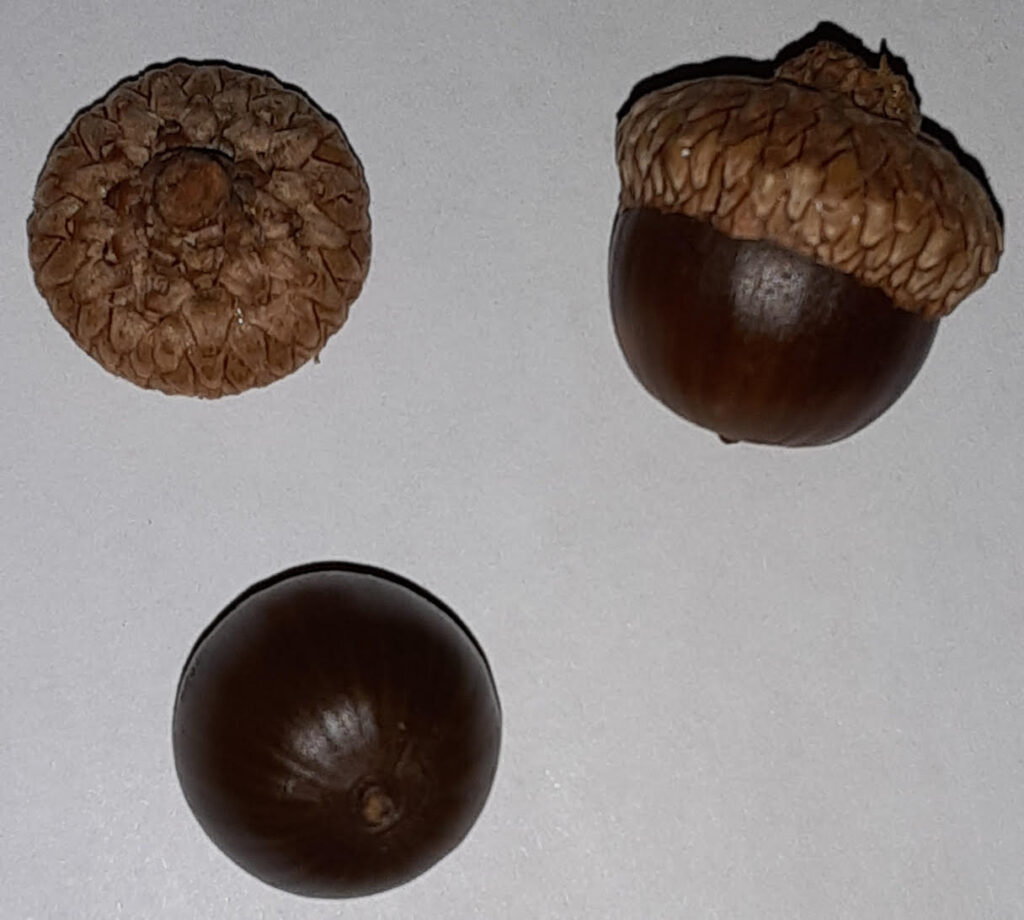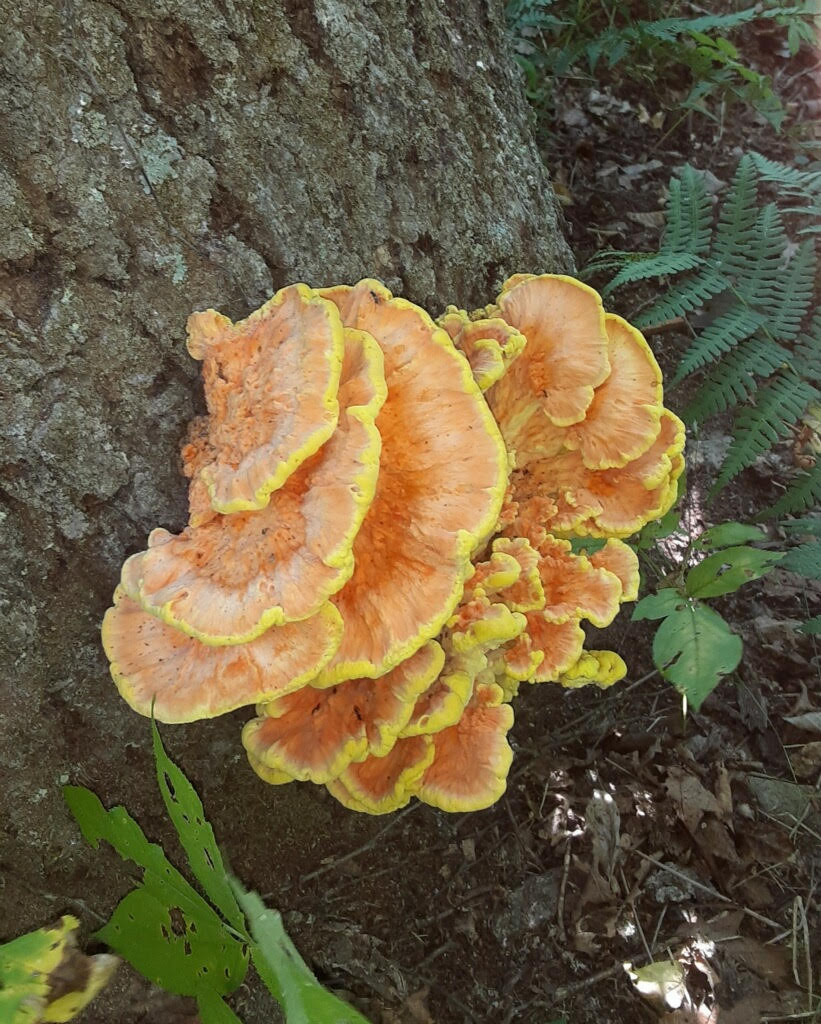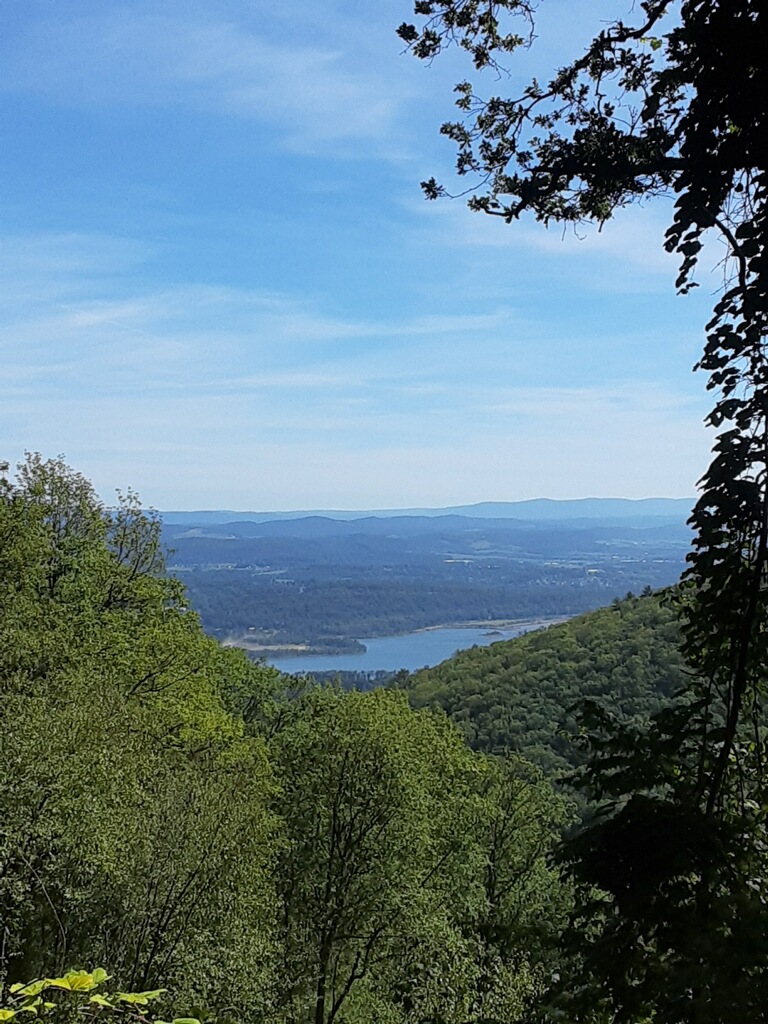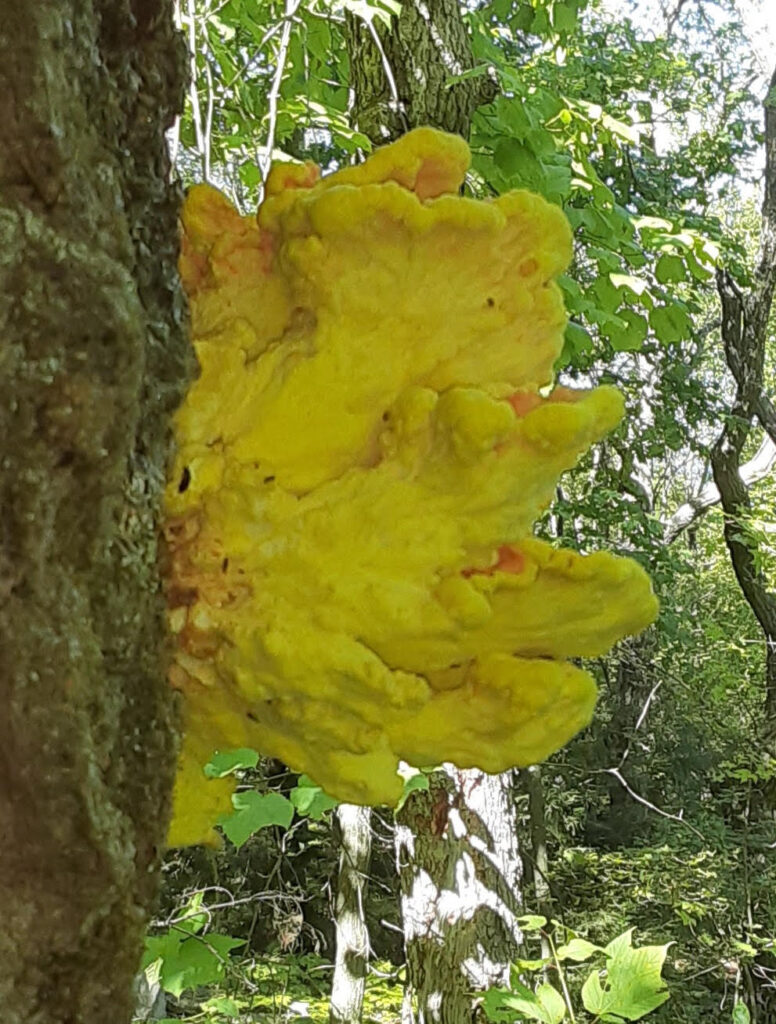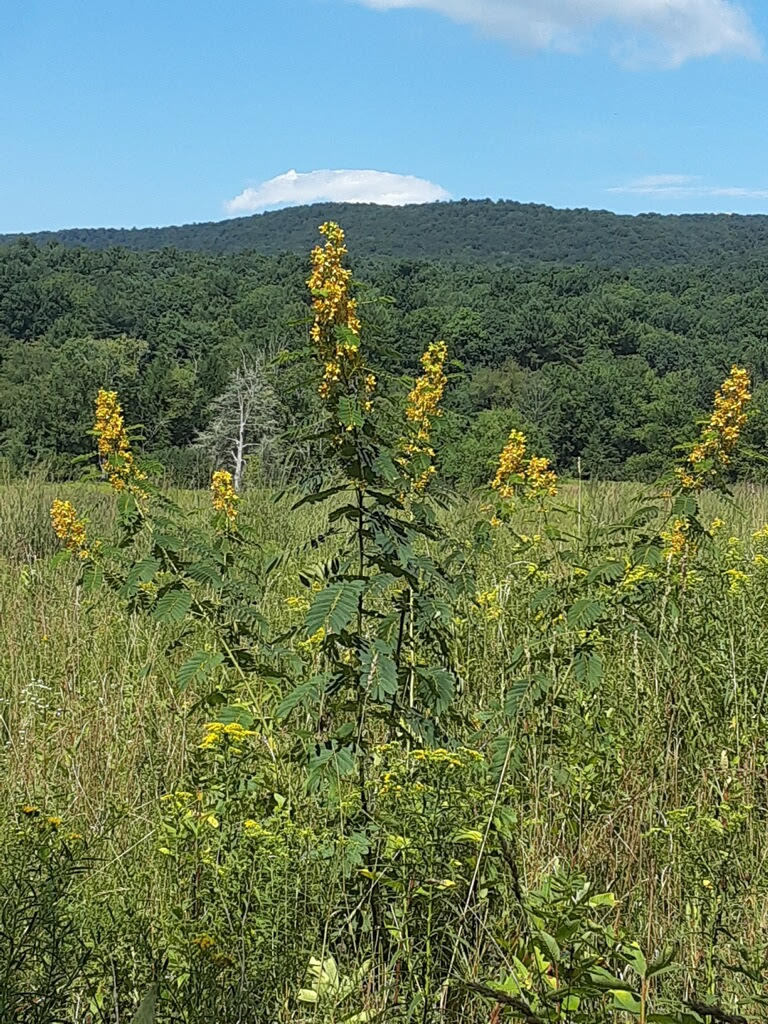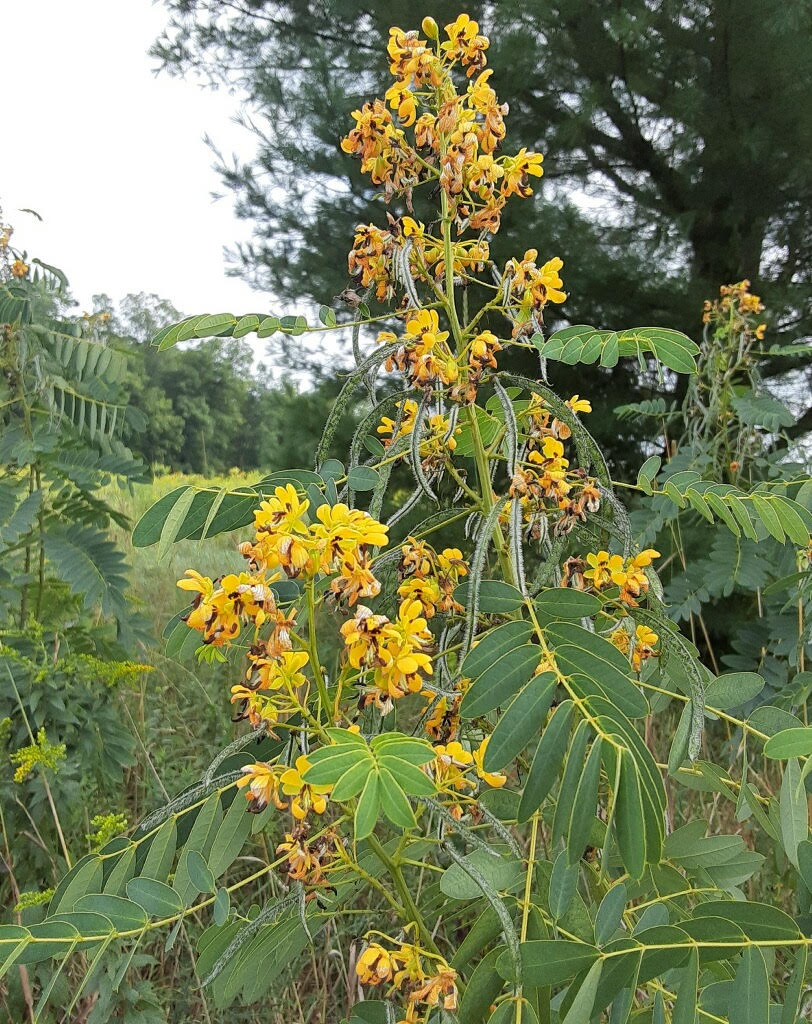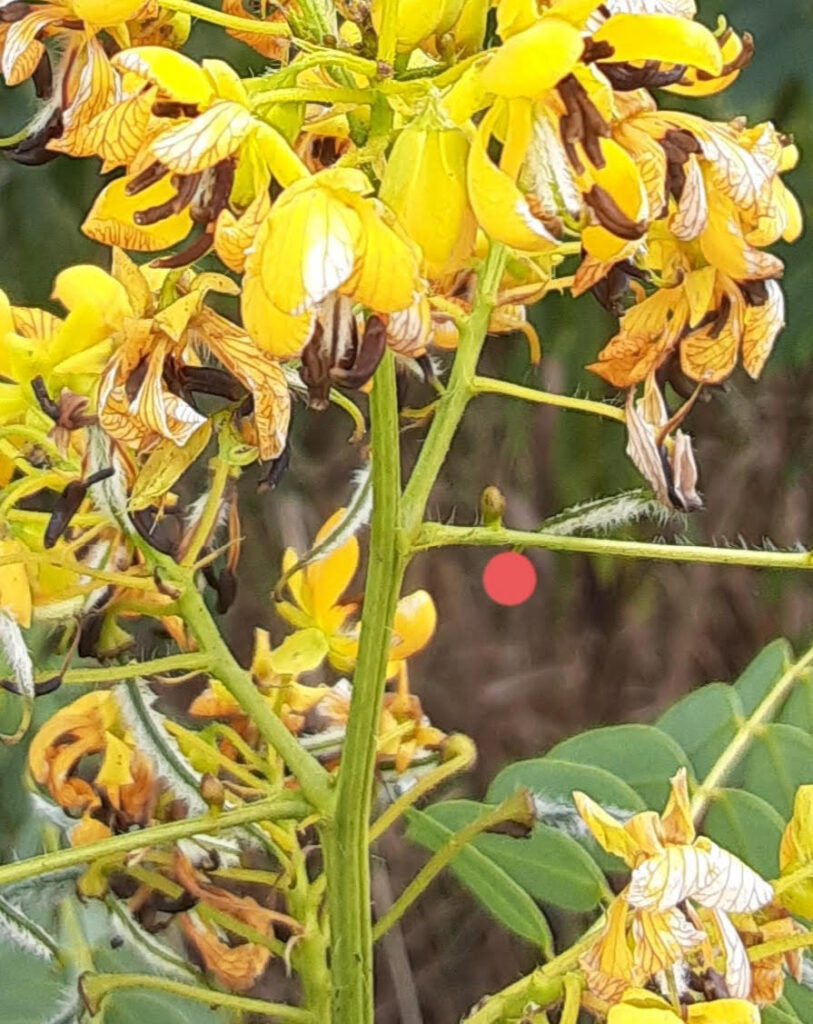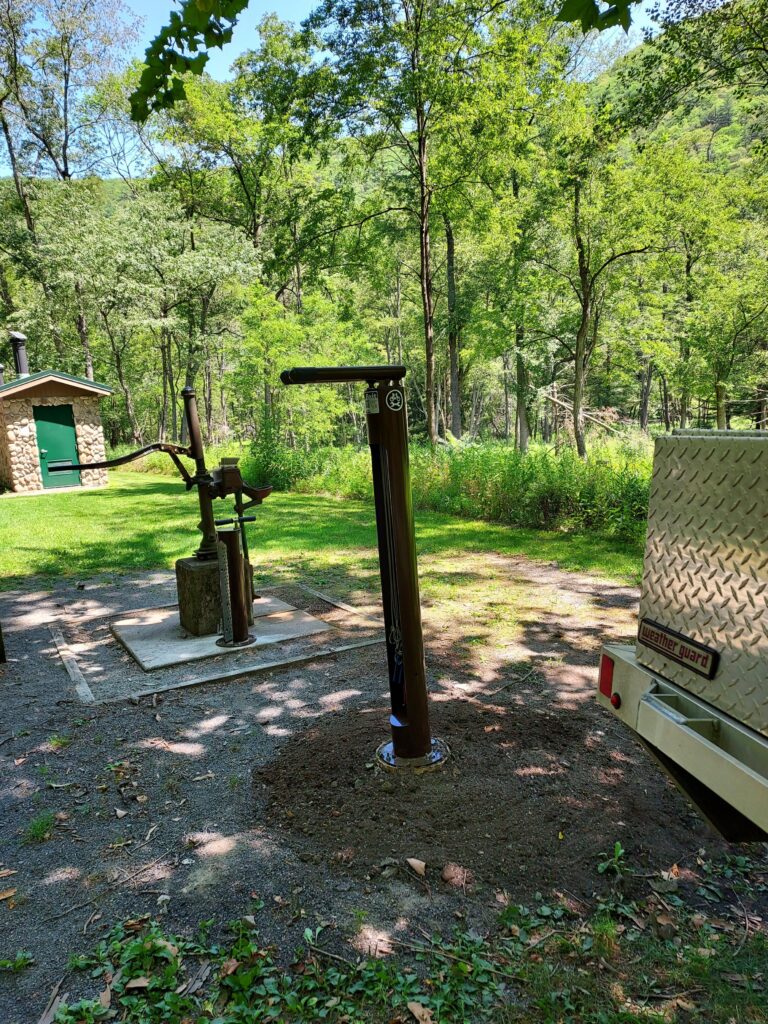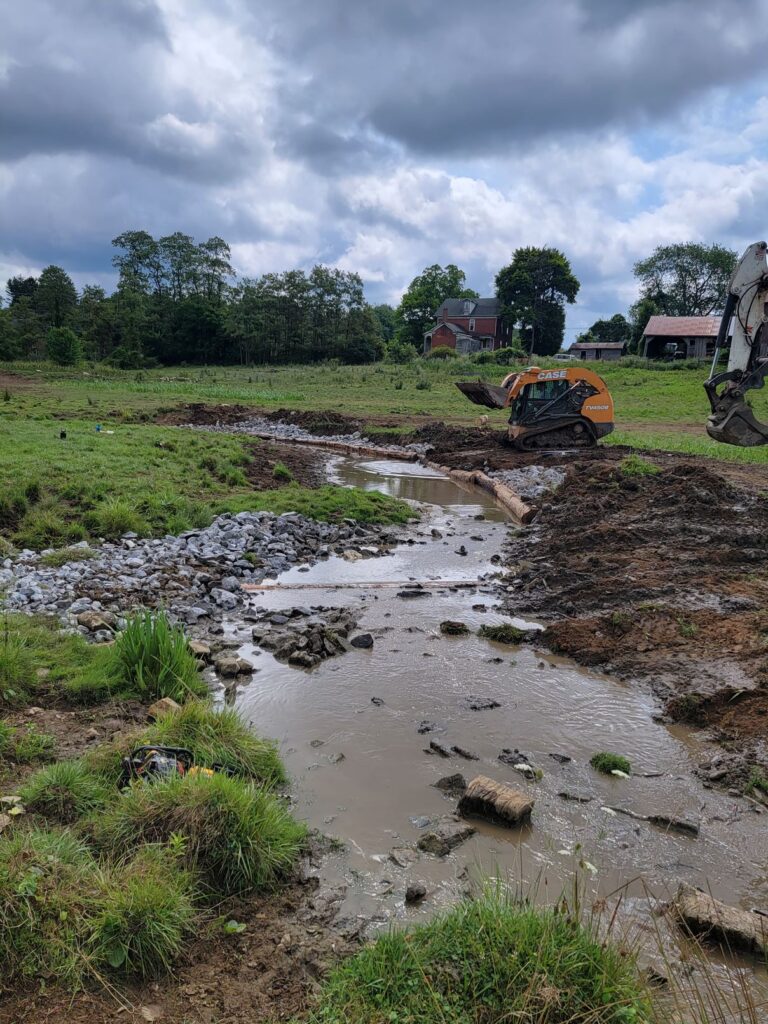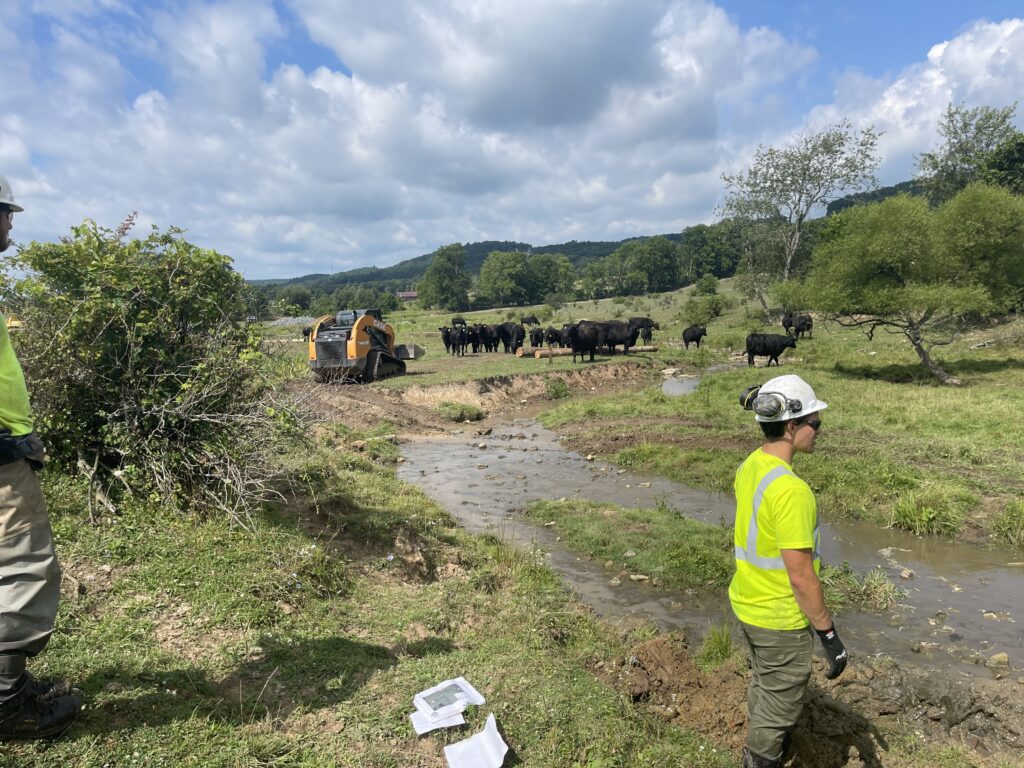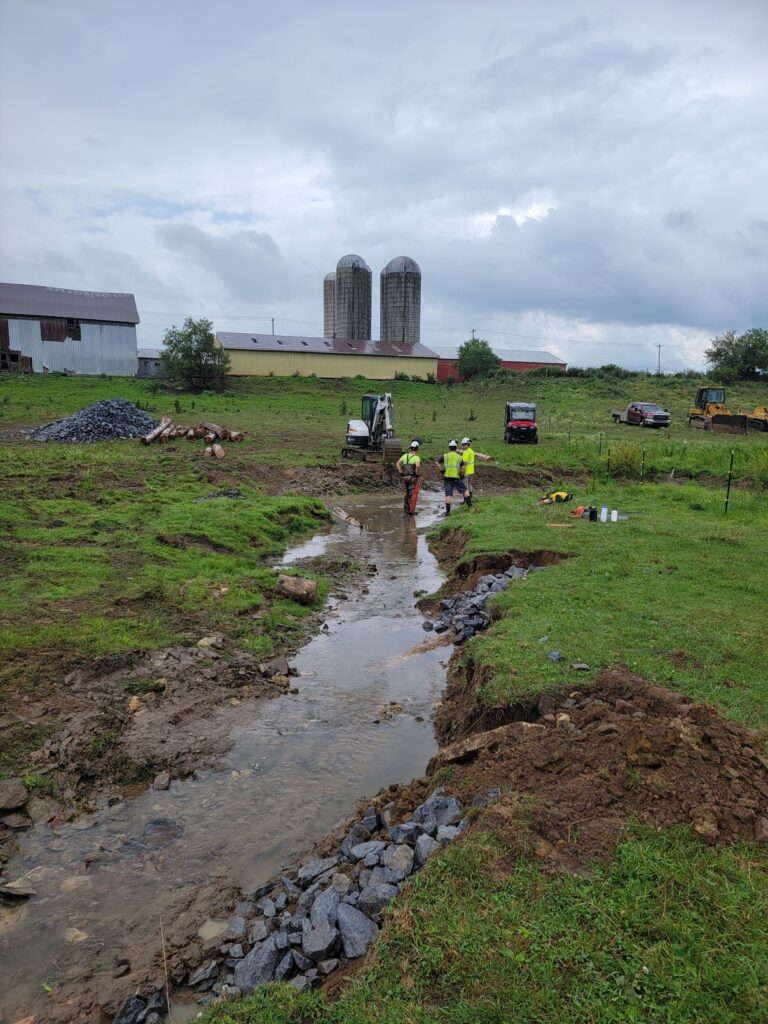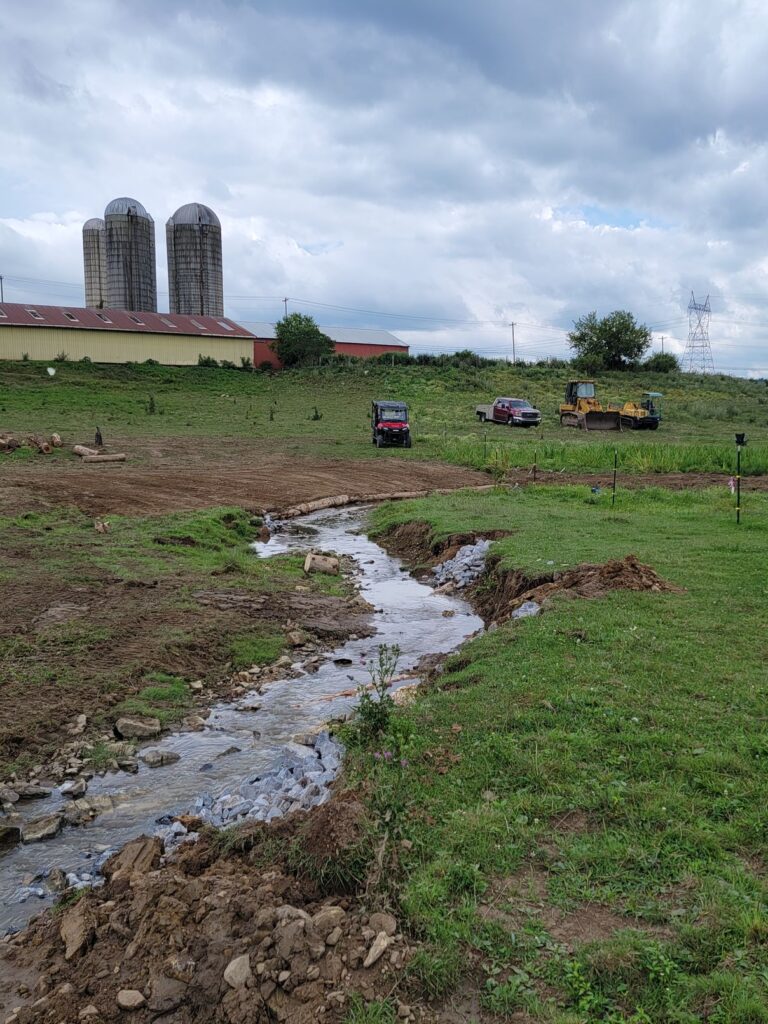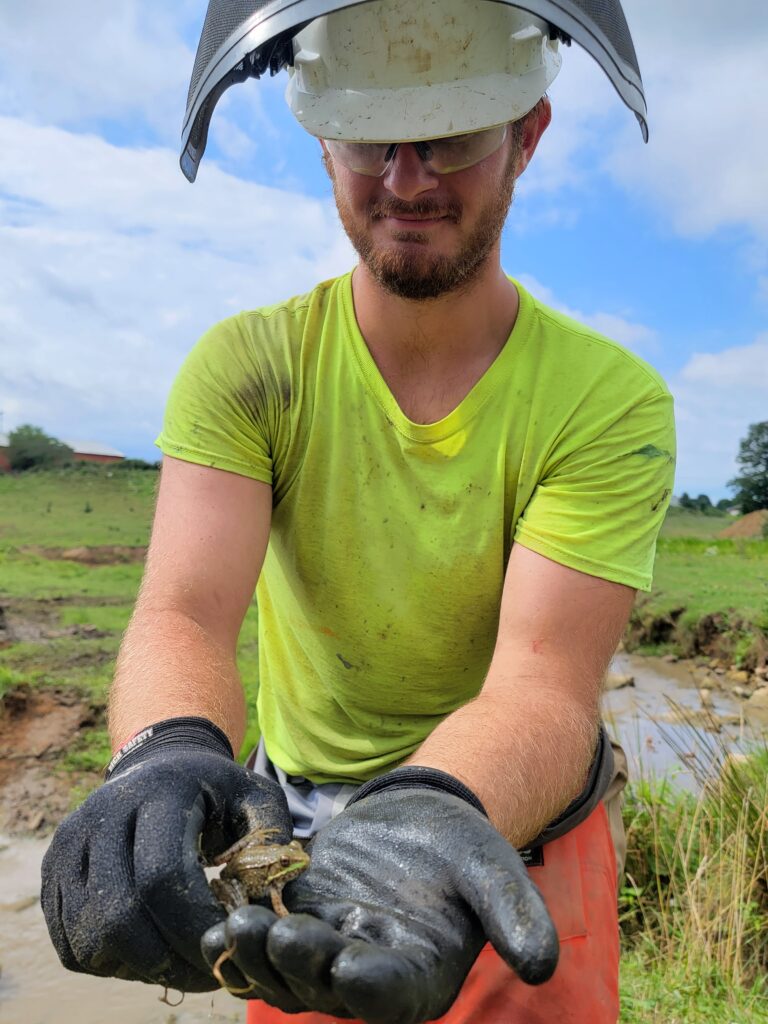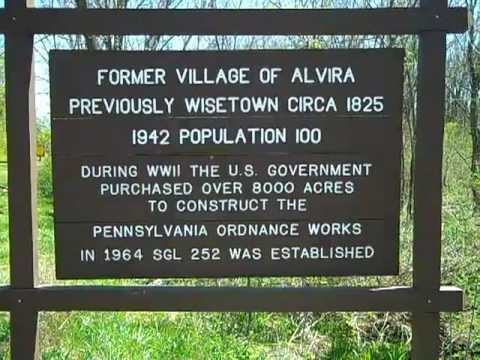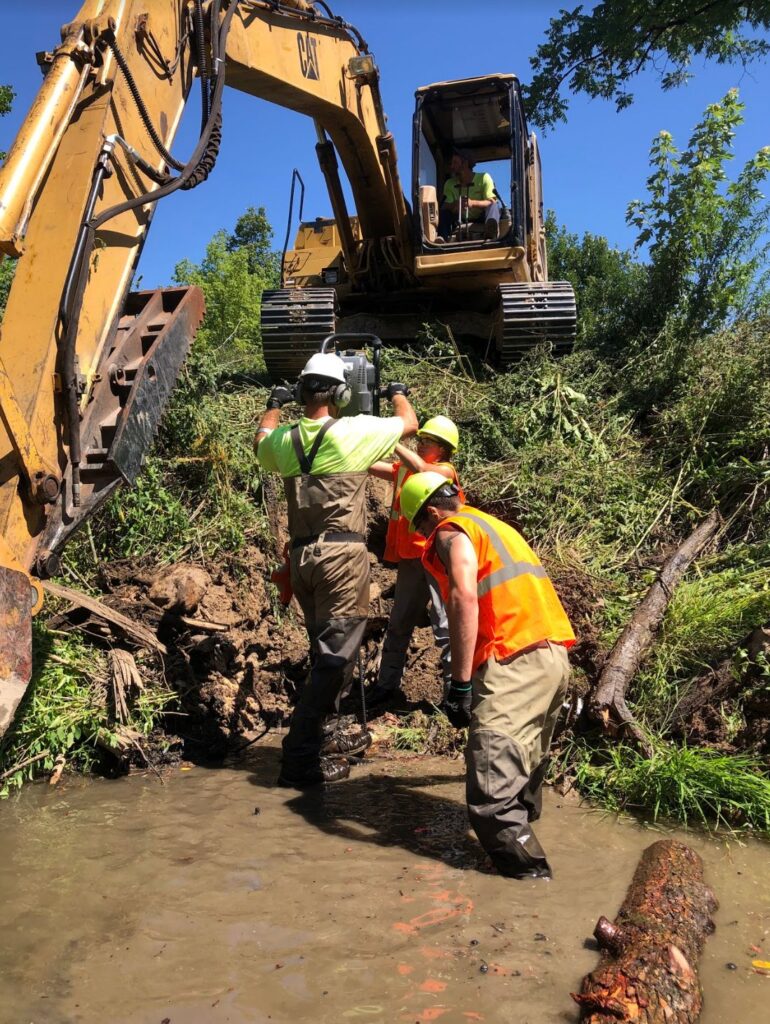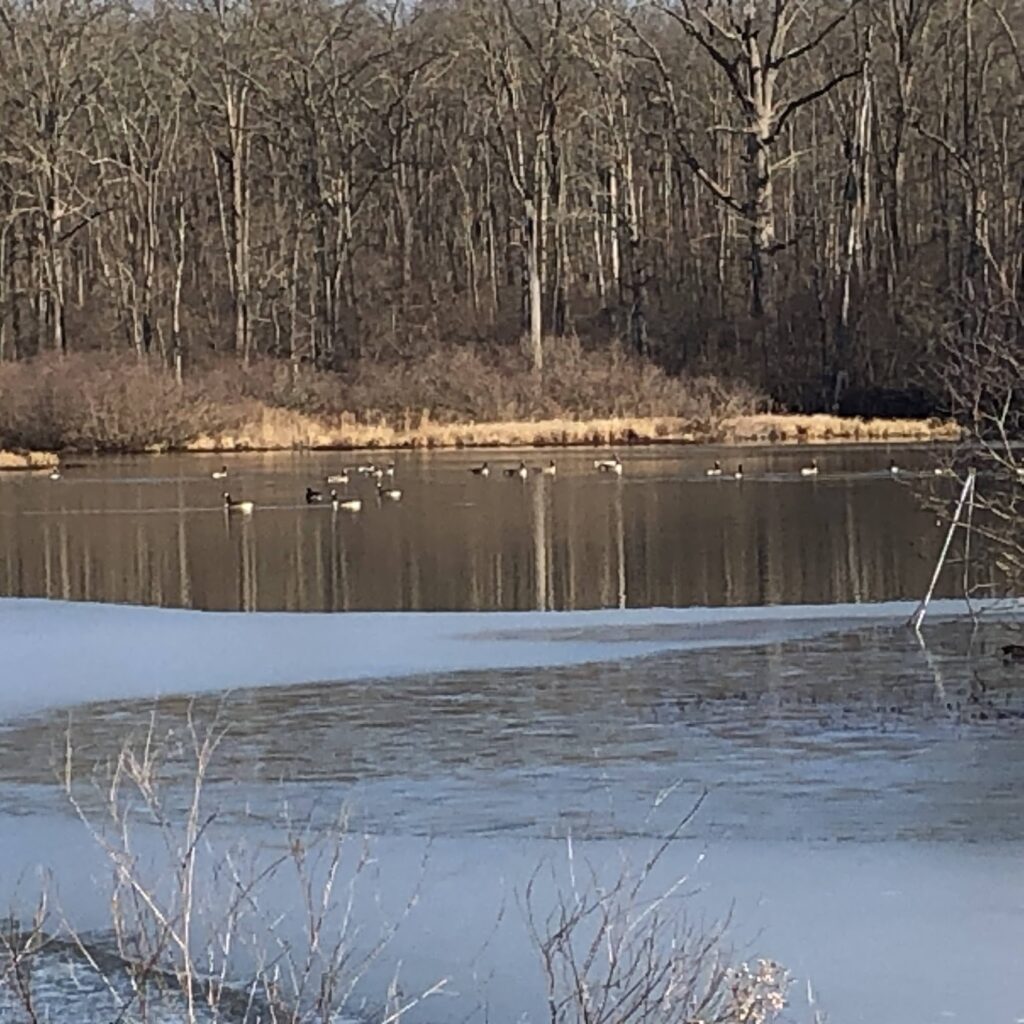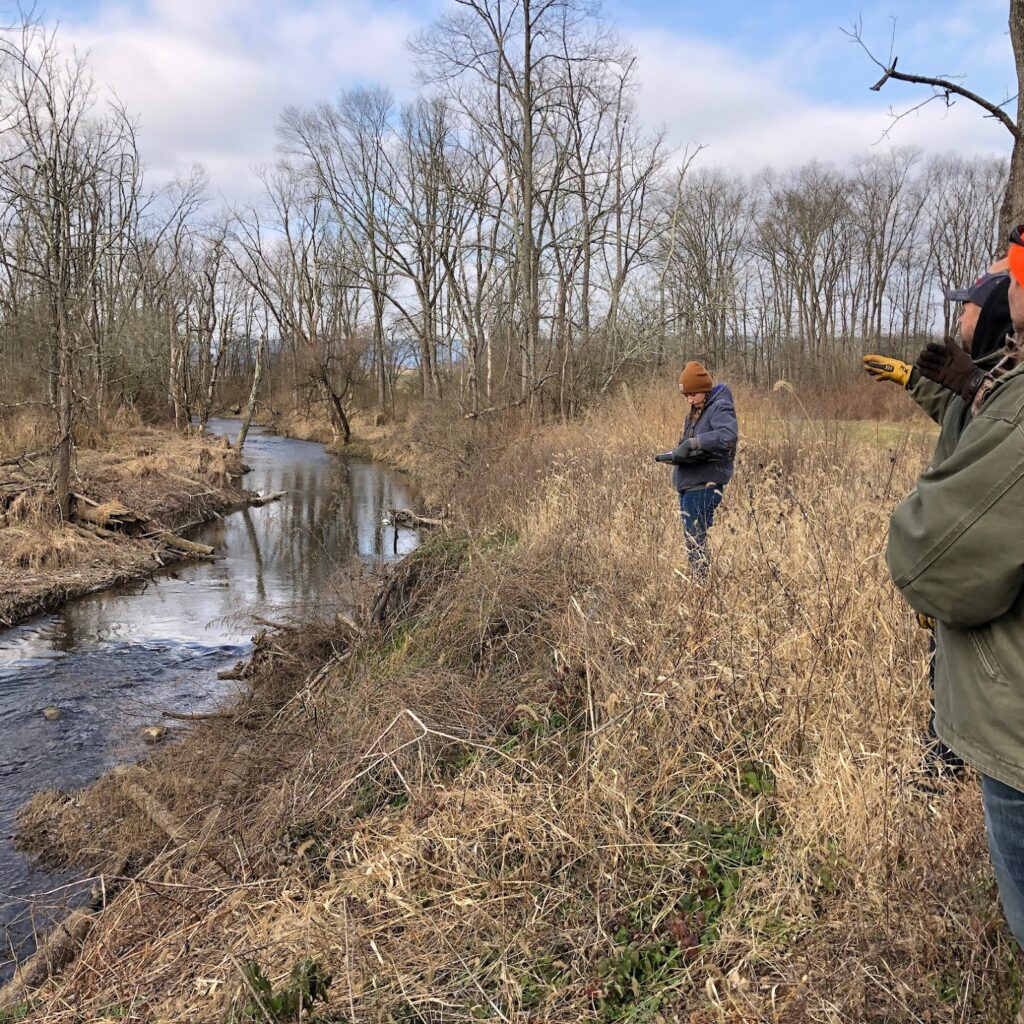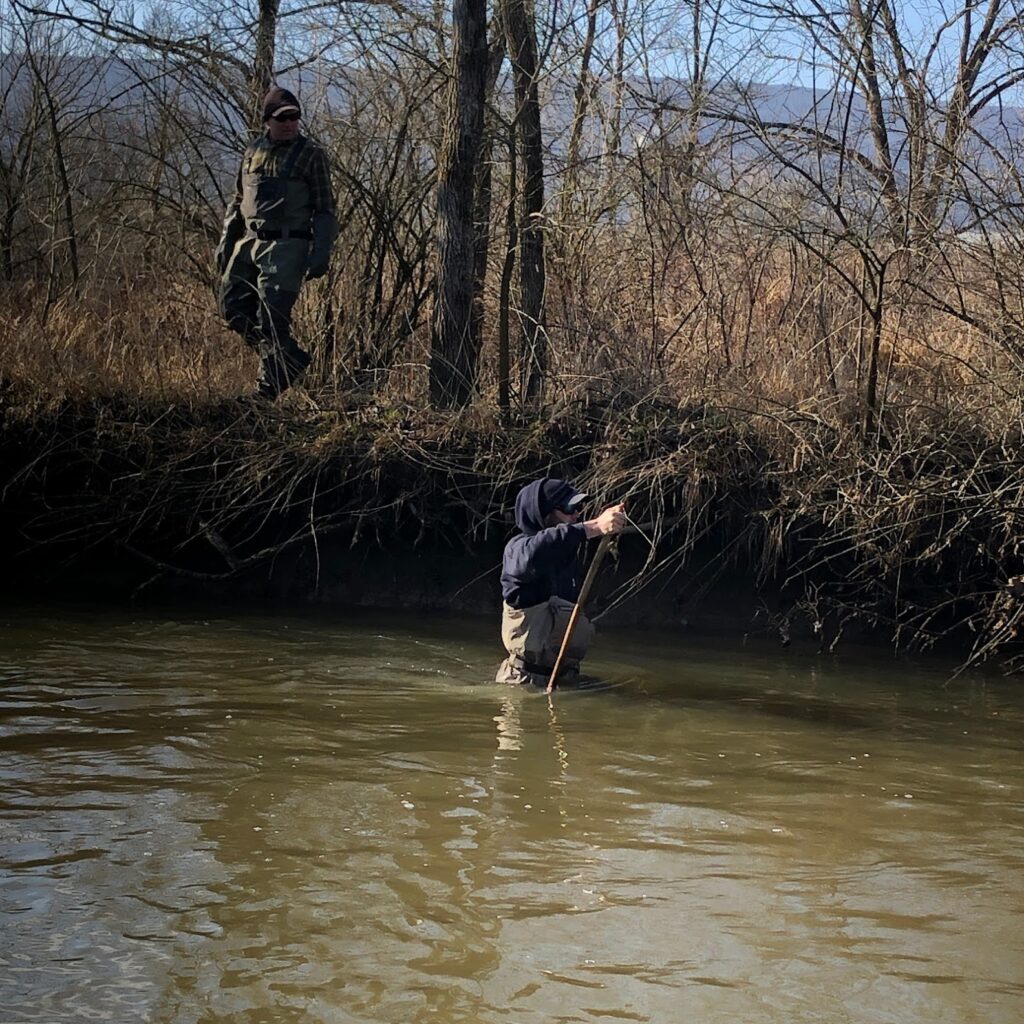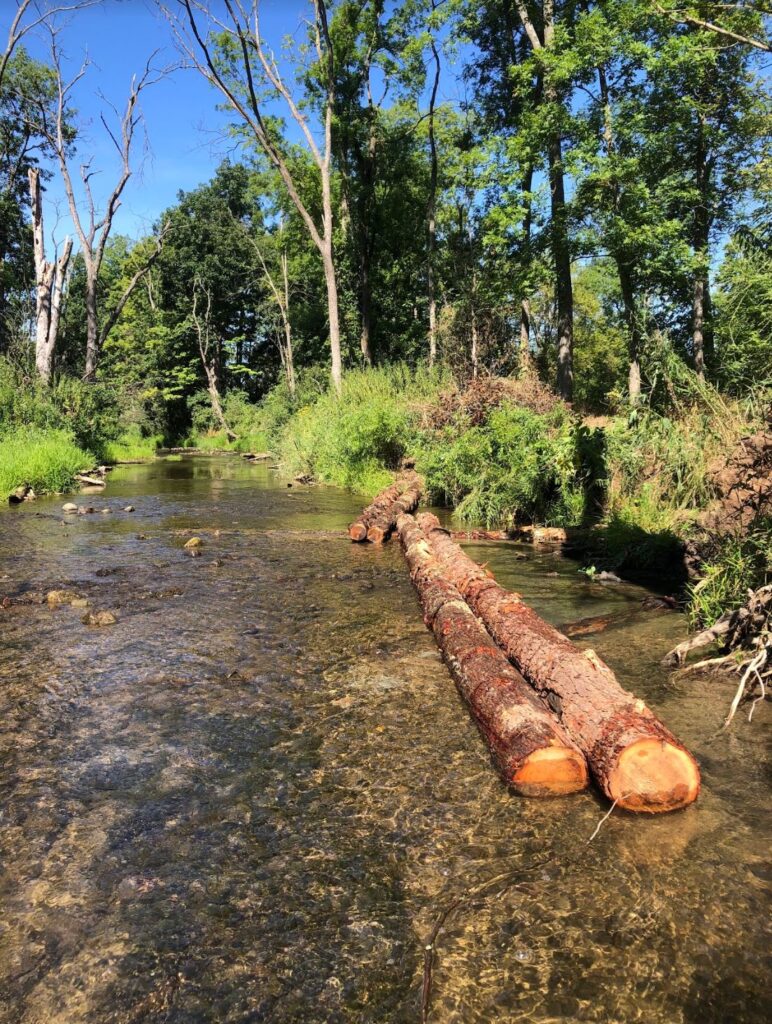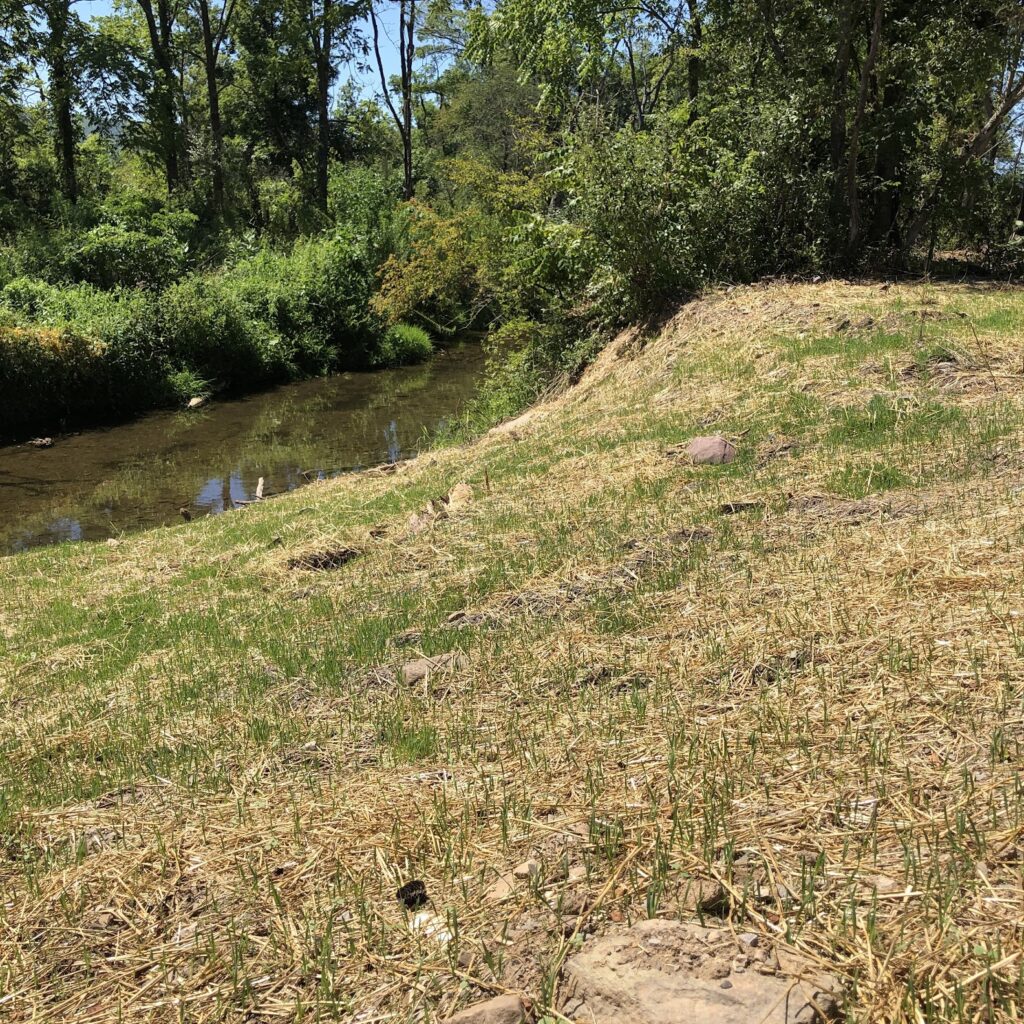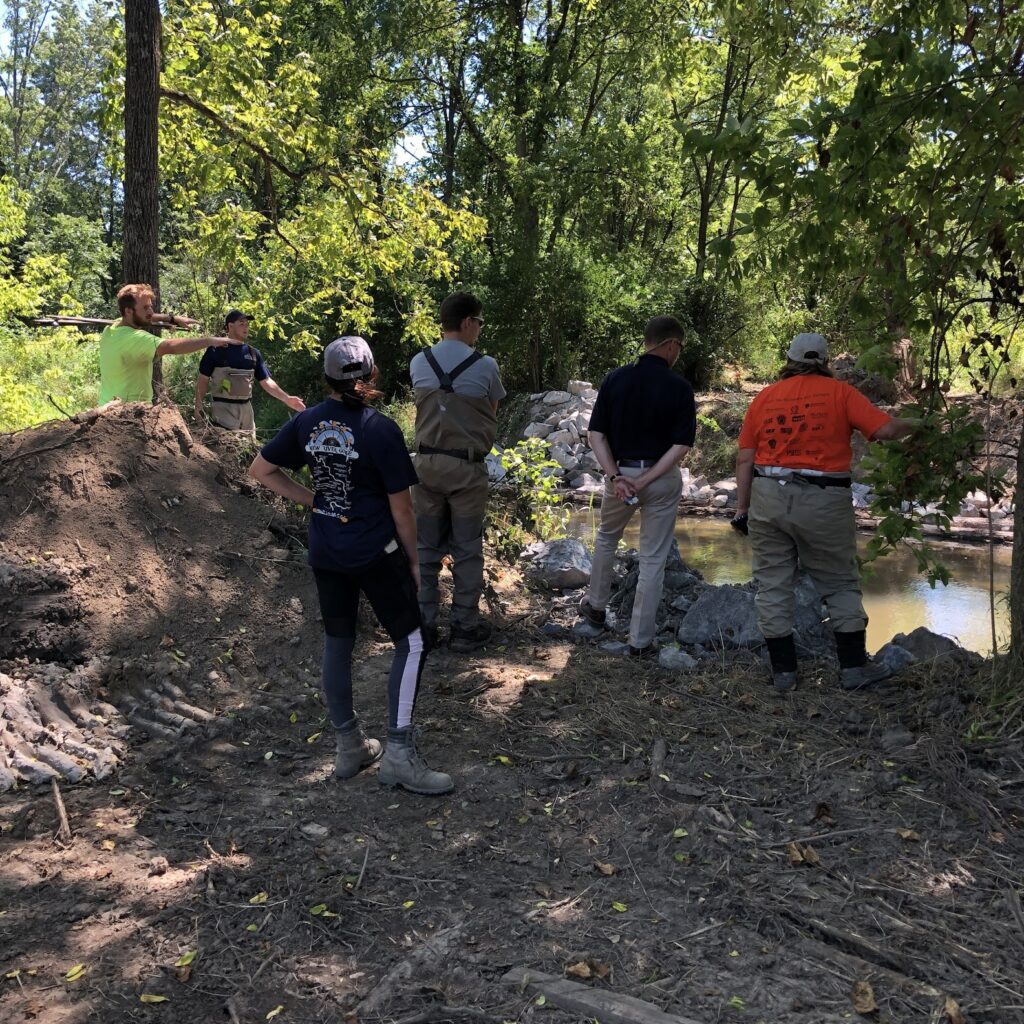By, Susan Sprout
Did you ever go to the Library of Congress site named “Everyday Mysteries”? Luckily, I found it and the above question along with its surprising answer – Watermeal. Ever heard of that? I hadn’t, but I had seen the plant itself just four days earlier, growing in a pond as I walked the trail at Lime Bluff. What a coincidence! It is a joy to walk and bird and look at plants and trees there. That’s when I saw a completely green pond. Yuck, I thought, a total algae takeover! Then a slight wind arose, and all the green lazily swirled and parted to expose the water’s surface. NOT algae – because it would have stayed clumped together. I put my hand in the water and out it came, covered with lots of tiny green bumps. The plants were miniscule like poppy seeds and felt like them, too.
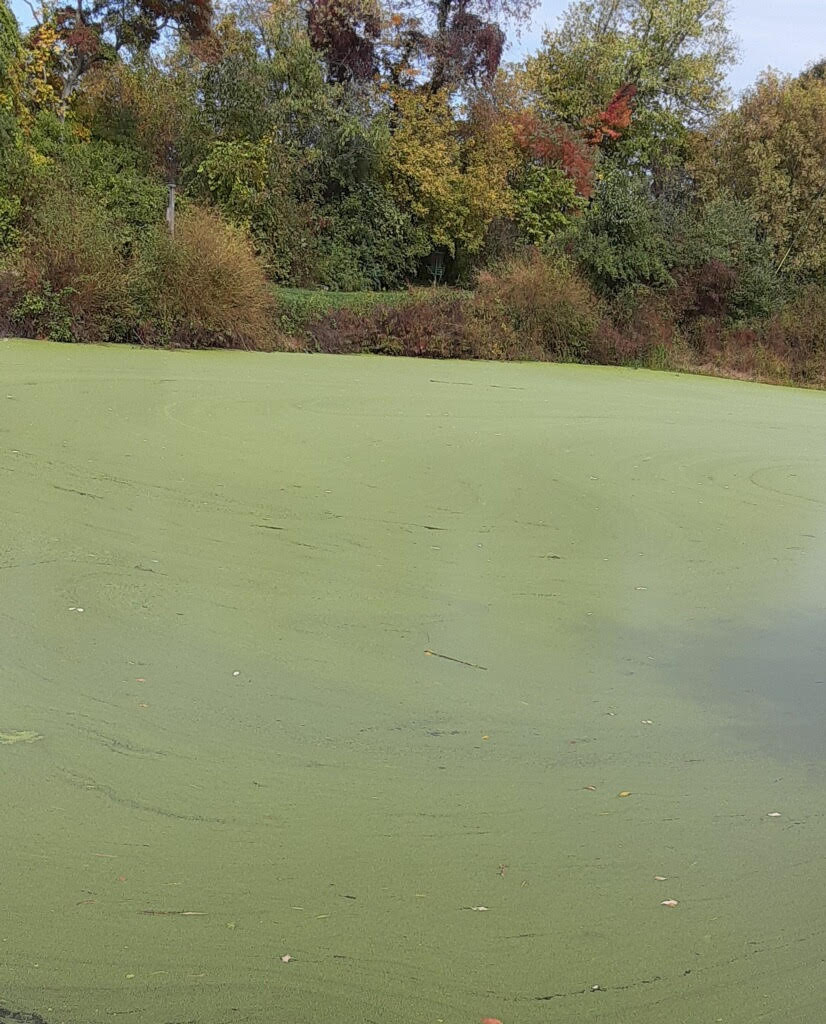
I couldn’t wait to check out my PA plant reference. There I found Watermeal. Its other small relatives were listed and described, too, as species of Duckweed. But Watermeal is a different species and in a different genus and definitely the smallest of the whole bunch. Wow, the smallest flowering plant in the world growing nearby!
Using my binocular microscope and the grid pattern in the bottom of a Petri dish full of green specks, I was able to measure them – ranging from one-half to one millimeter long. Remember, there are 25.4 millimeters in an inch. Now, look at a ruler and be amazed at how tiny these plants really are! I am!
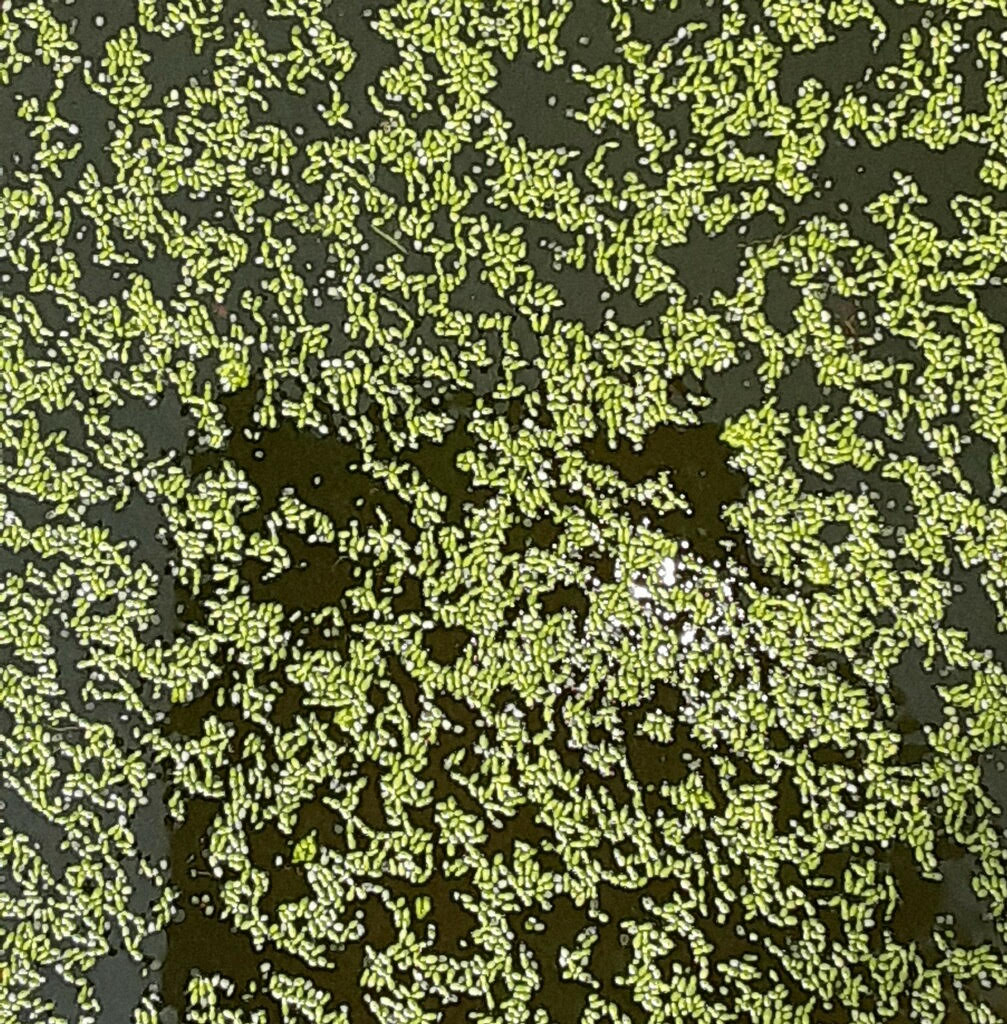
They have no roots, no veins, no stem. Just an oval-shaped leaf called a frond, kept afloat by tiny cavities filled with the oxygen made when they photosynthesize in the sunlight. They don’t bloom often, using their single anther (male part) and their solitary pistil (female part) to make one almost invisible seed. Most of the time Watermeal will reproduce vegetatively by making clones that emerge from budding pouches, located at one end of their fronds. The parent plant and clone may stay together for a while. In the fall, a special clone filled with starch called a “winter turion” is produced. The accumulated starch makes the turion heavier than water and it sinks, to overwinter on the pond bottom, using the starch to stay viable. It will rise in spring after making enough oxygen to create buoyancy. One resource indicated that Watermeal can cover an entire pond within a few weeks after arising from the pond bottom.
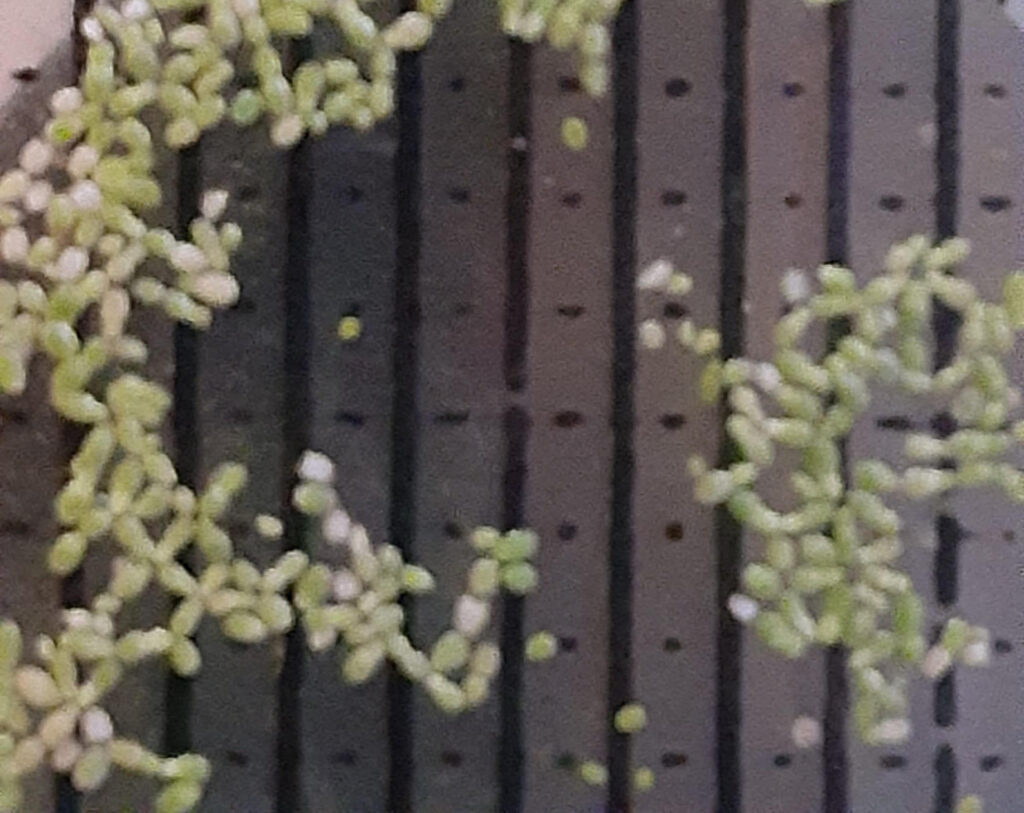
Watermeal’s scientific name is Wolffia brasiliensis. It is a member of the Arum Family, like Skunk Cabbage, Green Dragon, and Jack-in-the-Pulpit…a morphologically divergent member of the Arum Family. Recent DNA testing got the whole Duckweed Family classified as a sub-family within the Arum Family. Watermeal, native to both North and South America, is considered an annual plant. It grows in the fresh water of ponds, sinkholes, swamps and slow-moving streams. Many times, it is found floating among its larger Duckweed relatives.
A lot of research is being done with Duckweeds (Lemna) and Watermeal (Wolffia) because of their effective up-taking of carbon, nitrogen, phosphorus, pathogens, and toxins in the mitigation of polluted waters. With that kind of nutritious diet, some species can double every 36 hours. The downside is they need to be removed from the water before they die and release all of the contaminates back into the same water.


